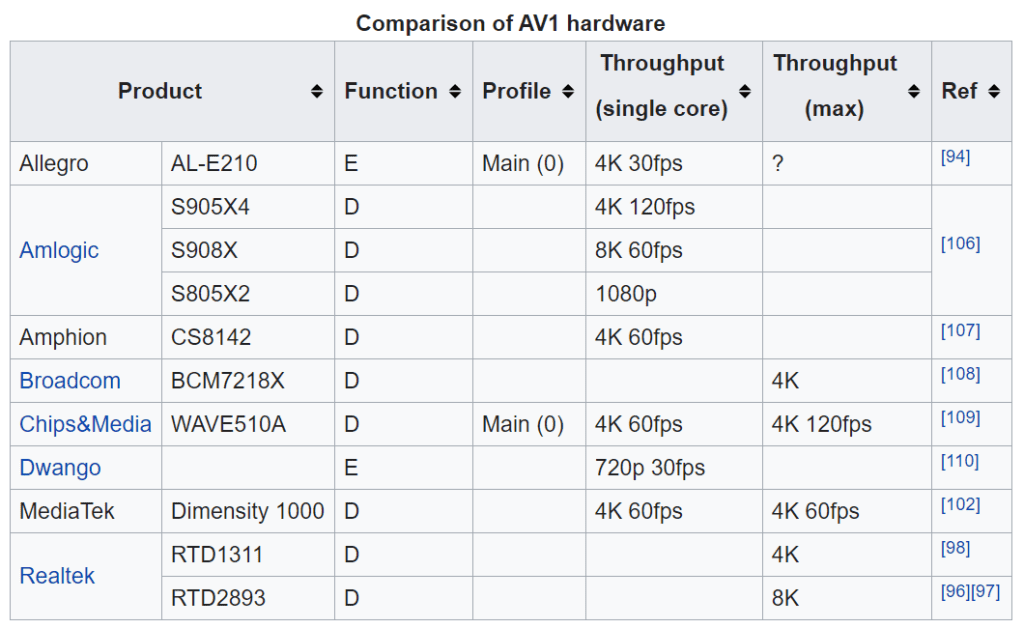Just a quick announcement that the Alliance for Open Media has launched version 2.0 of the AOMedia AV1 encoder that you can download here. According to the Phoronix website, from which I grabbed this news:
“Libaom 2.0 is the first release since the original 1.0 release back in mid-2018 after the AOMedia codec working group approved the 1.0 release. The developers view this AOMedia AV1 2.0 release as now being their “first official release” for production. Libaom 2.0 adds a real-time encoding mode, SVC support, drops multi-resolution encoding, documentation updates, and other improvements to this open-source AV1 reference encoder.
No word on improvements to encoding speed and/or quality, but it’s encouraging that the developers recognize that the 1.0 release, with its glacial encoding times, wasn’t production-ready.
Note that there are at least three other AV1 codecs available. There’s the open-source rav1e, which Mozilla bills as the “fastest and safest AV1 encoder” (who knew encoding with AV1 wasn’t safe?). There’s Intel’s SVT-AV1, also open-source and launched with Netflix at NAB 2019. Finally, there’s the WZ Aurora codec from Visionular which performed so well in some recent trials from the University of Moscow (see featured image above).
When Libaom has first announced it was the only game in town for AV1 and it was mind-boggling slow. I hope to see how Libaom 2.0 compares to some of these other AV1 codecs in the near term.
2020 should be a big year for AV1 with multiple software codecs available and the first hardware starting to appear, as shown in the table below from Wikipedia. If you’re interested in learning more about how AV1 is being used, there’s a free session at Streaming Media East Connect 2020 entitled AV1 – A Reality Check on June 2 from 12:00 p.m. to 1:00 p.m. (ET) that includes panelists from Netflix, Vimeo, and Mozilla. 
 Streaming Learning Center Where Streaming Professionals Learn to Excel
Streaming Learning Center Where Streaming Professionals Learn to Excel









